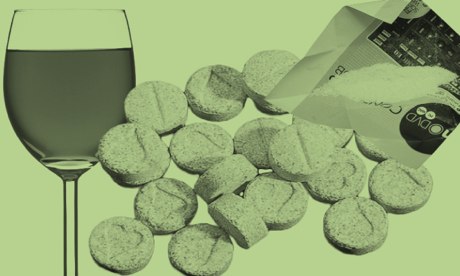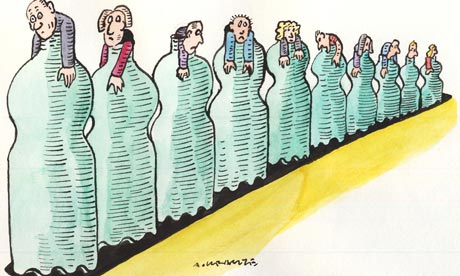
Not too long ago, public opinion was against philanthropy. A new book explains how attitudes have changed, and why we must scrutinise them.
Once upon a time there was charity. The haves gave some to the have-nots, and that was that. Sometimes the giving impulse was religious, sometimes guilt-induced. But charity was more about the soul of the giver than the welfare or rights or dignity of the receiver. This is why there can be no charity between equals. Or between friends. For all these reasons, charity had for long remained an activity rooted in the personal-private, quasi-religious sphere.
Then came philanthropy. Jeremy Beer, in his The Philanthropic Revolution: An Alternative History of American Charity, argues that the displacement of charity by philanthropy was “the result of a reconceptualisation of voluntary giving as primarily a tool for social change.” It also marks, according to Beer, a shift from a theological to a secular framework for giving, bringing with it all the baggage that secularisation entails – blind faith in the technological mastery of the social world, centralisation, and the bureaucratization of personal relations.”
And today we have ‘philanthrocapitalism’. The term gained currency after The Economist carried a report in 2006 on ‘The birth of philanthrocapitalism’. Noting that “the need for philanthropy to become more like the for-profit capital markets is a common theme among the new philanthropists,” the article explains why philanthropists “need to behave more like investors.”
Two years later came the book that today’s biggest philanthropists swear by: Philanthrocapitalism: How the Rich can Save the World by Matthew Bishop (a senior business editor from The Economist) and Michael Green. The title is not intended to be ironic. It is an earnest argument: in a world of rich men and poor states, who better to save the poor than the rich themselves?
The advent of philanthrocapitalism may have finally brought to the fore what is tacitly understood but rarely made explicit -- the symbiotic relationship between capitalist excess and philanthropic redress.
When philanthropy was shunned
It is no accident that the first great philanthropists were also the greatest capitalists of their age. Nor is it a coincidence that many of these men, remembered today by their philanthropic legacies – John D Rockefeller, Andrew Carnegie, Andrew Mellon, Leland Stanford, James Buchanan Duke – also figure in Wikipedia’s list of “businessmen who were labelled robber barons”.
If one is to make sense of the recent surge in the quantum of philanthropic funds sloshing around looking for worthy causes – the Bain & Co. Indian Philanthropy Report 2015 notes that foreign philanthropic funding in India more than doubled from 2004 to 2009, jumping from $0.8 billion in FY‘04 to $1.9 billion in FY’09 – then one needs to go beyond the numbers and look at the economic underpinnings of corporate philanthropic initiatives. This is precisely what sociologist Linsey McGoey sets out to do in No Such Thing as a Free Gift: The Gates Foundation and the Price of Philanthropy, which released last month.
No Such Thing… kicks off with a quick reminder of the shady origins of philanthropy. How many of us know, for instance, that not too long ago public opinion (and government opinion) was against philanthropy in general, and corporate philanthropy in particular?
In the early 20th century, philanthropic foundations were “viewed as mere outposts of profit-seeking empires, only cosmetically different from the corporations that had spawned them, a convenient way for business magnates to extend their reach over domestic and foreign populaces.” McGoey quotes US Attorney General George Wickersham, who had observed that they were “a scheme for perpetuating vast wealth” and “entirely inconsistent with the public interest.”
Yet what was common sense in 1910 would sound blasphemous in 2015. While no self-respecting economist today can deny the obscene economic inequality that characterises our age, not many would willingly acknowledge the connection between concentration of wealth and philanthropy. That is to say, an equitable society would suffer neither a club of the super-rich that seeks self-expression through philanthropy, nor a class of the super-poor that is dependant on philanthropic charity for survival. McGoey makes this point simply with a quote from the economic historian RH Tawney: “What thoughtful rich people call the problem of poverty, thoughtful poor people call with equal justice the problem of riches.”
If philanthropy is thriving in this age of extreme inequality, it is because it serves a dual purpose: one, to make inequality more acceptable ideologically and morally; and two, to define poverty as a problem of scarcity rather than of inequality. Hence the ultimate argument in favour of philanthropy, deployed when all else fails, is the one based on scarcity: ‘something (from a foundation) is better than nothing (from the government)’.
Philanthropy is the palliative that makes the pain of capitalism bearable for those fated to endure it. Philanthrocapitalism, on the other hand, is about transcending this palliative function to represent capitalism itself as a philanthropic enterprise.
In Bishop and Green’s formulation, such a philanthropic capitalism – also known as ‘venture philanthropy’, ‘social entrepreneurship’, ‘impact investing’ – would drive innovation in a way that “tends to benefit everyone, sooner or later, through new products, higher quality and lower prices.”
As McGoey reveals in her book (and Bishop and Green attest in theirs), no one does philanthrocapitalism better, or bigger, than Bill Gates, who helms the world’s largest philanthropic foundation, the Bill and Melinda Gates Foundation (henceforth Gates Foundation), with an endowment of $42.3 billion. For this very reason, the Gates Foundation is an ideal case study for understanding the social impact of philanthropic foundations.
Problems with philanthrocapitalism
McGoey enumerates three obvious problems with philanthrocapitalism, illustrating each with reference to the Gates Foundation.
First is the lack of accountability and transparency. McGoey points out that the Gates Foundation is the single largest donor to the World Health Organisation (WHO), donating more than even the US government. While the WHO is accountable to the member governments, the Gates Foundation is accountable only to its three trustees – Bill, Melinda, and Warren Buffet. It is not unreasonable to wonder if the WHO’s independence would not be compromised when 10% of its funding comes from a single private entity “with the power to stipulate exactly where and how the UN institution spends its money.”
Secondly, “philanthropy, by channelling private funds towards public services, erodes support for governmental spending on health and education.” With governments everywhere slashing their budgets for public goods such as education and healthcare, the resultant funding gap is sought to be filled by philanthropic money channelled through NGOs. But with one crucial difference: while the citizen has a rights-based claim on government-funded social security, she can do nothing if a philanthropic donor decides to stop funding a given welfare project – as has happened time and again in many parts of the world.
At the same time, even as it facilitates government withdrawal from provision of social goods, philanthropy paves the way for entry of private players into the same space. McGoey details how the Gates Foundation orchestrated this brilliantly in the American education sector, where it helped create a whole new market for private investment: secondary and primary schools run on a for-profit basis.
Third, the same businessmen who made their money through unhealthy practices that worsened economic inequalities are now, in their philanthropic avatar, purporting to remedy the very inequalities they helped create. In the case of the Gates Foundation, Microsoft’s illegal business practices are well documented in the US Department of Justice anti-trust case against the company. As McGoey puts it, the fortune now being administered through the Gates Foundation “was accumulated in some measure through ill-gotten means.”
Of course, none of this should detract from the undeniably good work that philanthropic bodies have done. The Gates Foundation has saved countless lives, especially in Africa, through its funding of immunisation programmes and outreach projects. Its several achievements, therefore, have been deservedly celebrated. Nonetheless, critical scrutiny lags far behind the lavish accolades.
Even the three issues discussed above barely scratch the surface. McGoey goes on to raise several more.
She asks, for instance, asks how the Gates Foundation’s interventions in global health tally with Bill Gates’ violent opposition to any dilution of the patent regime. The Gates Foundation was the largest private donor to the Global Fund to Fight AIDS, Tuberculosis and Malaria. At the same time, it “has continually lobbied against price reductions of HIV drugs and other medicines”, infuriating activists who “want a more equitable global patent regime” and “do not want charity handouts.”
She examines the Gates Foundation’s partnerships with Coca-Cola, not exactly popular among those who value public health. In the context of the Foundation’s work to help combat global hunger, she reveals how its financial ties with Monsanto and investments in Goldman Sachs “may be compounding food insecurity rather than mitigating it”.
She interrogates its skewed research portfolio. Of the 659 grants made by the Gates Foundation in the field of global health, 560 went to organisations in high-income countries, even though the problems being targeted were in low-income countries. How does excluding local scientists and programme managers who are best placed to understand the problems help the cause, asks McGoey.
While it is generally taken for granted that a philanthropic foundation would make grants only to non-profits, McGoey draws attention to the Gates Foundation’s non-repayable grant of $4.8 million to Vodacom, a subsidiary of Vodafone. In 2014, the Gates Foundation also announced a grant of $11 million to Mastercard for a “financial inclusion” project in Nairobi. Interesting how philanthropy has evolved to such an extent that in a world wracked by hunger, disease, war, and malnutrition, two entities found to be most in need include a multinational credit card network and a multinational mobile service provider.
Finally, not to be forgotten are the tax breaks that philanthropic foundations enjoy. Critics have pointed out that nearly half of the billions of dollars in funds that philanthropic foundations hold actually belong to the public, as it is money foregone by the state through tax exemptions. History has shown that progressive taxation is the most efficacious route to redistribution. But a strong case for philanthropy is another way of making a strong case for lower taxation of the rich – after all, it’ll leave them with more money to spend on uplifting the poor. Small wonder then that philanthropy’s biggest enthusiasts are political conservatives.
The Economist report on philanthrocapitalism cited above also quotes a young Indian philanthropist, Uday Khemka, who predicts that “philanthropy will increasingly come to resemble the capitalist economy.” That was in 2006. Nine years later, the publication of McGoey’s No Such Thing As a Free Gift marks the first systematic attempt to document this phenomenon.
sampath.g@thehindu.co.in



